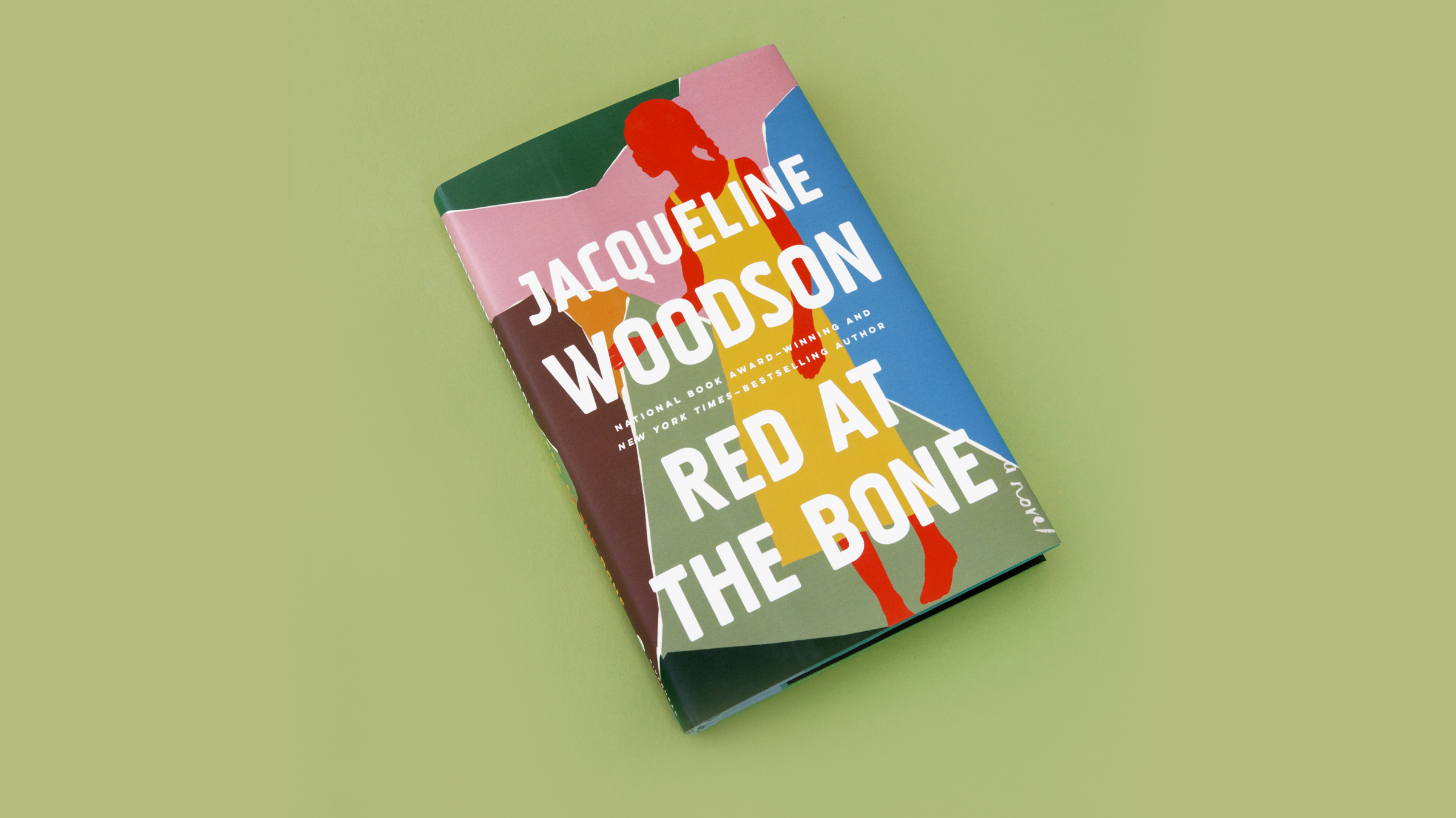
A treasure awaits readers who encounter Red at the Bone, who descend the staircase with a loose step as 16-year-old Melody does in her coming-of-age party at the start of the novel. Jacqueline Woodson’s latest book for adults looks at a middle-class black family in Brooklyn and the struggles and triumphs that brought them to this moment, celebrating the daughter who was the unexpected product of a teenage romance. The novel is both a uniquely black story about multigenerational love and upward mobility–and a universal American tale of striving, failing, then trying again.
Woodson, internationally renowned for her work for young readers, has published more than 30 books over as many years. In 2014, she won a National Book Award for Brown Girl Dreaming, a middle-grade memoir in verse. In Red at the Bone, the author refines the talent for finding precise language to describe overwhelm and passion, confusion and potential she exhibited in that memoir. In about 200 pages, we are met with Woodson’s vast range, insight and tenderness, particularly in her treatment of young people carrying the weight of old souls.
Teen pregnancy is often treated like a tragedy in narratives of black life, but the lens here is more realistic: life goes on. Melody spends her formative years with her father Aubrey and her maternal grandmother Sabe while her mother Iris heads off to college as planned.
At Oberlin, away from the watchful eye of her parents and her new family, Iris falls for someone, a sexy and smart young woman who stirs her more than any man ever has. It’s fitting then that the title of the novel references that raw desire we all have to claim the people and things we most want in life. When Iris imagines the object of her passion being with another woman, Woodson describes her jealousy in bracing terms: “She had to take slow breaths to calm herself down. She felt red at the bone–like there was something inside of her undone and bleeding.”
Love, whether requited or not, can be a killer. And the pangs of love, in its many forms, reverberate through Woodson’s pages, which hit close to the marrow of old Brooklyn, with brown girls and boys, dreaming; their parents and grandparents, too, wishing for peace, to be settled.
The chapters in Red at the Bone shift back and forth in time, giving each character a chance to narrate and moving seamlessly between their distinct histories. Po’Boy, the patriarch, was a Morehouse man; Sabe attended Spelman. Aubrey is content to work in the mail room at the World Trade Center. Grandmother and granddaughter are each, in her own right, the culmination of otherwise deferred dreams. They both present an opportunity to get things right after generations of lives pushed off track: Sabe in her stories of overcoming the terrors of the Tulsa, Okla., race riots, Melody as she dons the dress her mother was meant to wear to her own coming-of-age ceremony, one that never happened. Woodson evokes black formalism, a post-Reconstruction movement meant to highlight black dignity through dress, style and traditions performed beyond the white gaze, to depict an aspirational American family surviving the troubles they meet.
And while not a particularly sympathetic character, Iris represents that resilience. Her narration reminds us of just how young she and Aubrey were when they made the choices that set the course of their lives. Running through the novel is the realization that all stages of life have disruptions that will ripple on the surface and also below: at eye level here are the unresolved tensions coloring Melody’s ceremony, while beneath them are the unplanned events that have changed not just her life, but everyone’s. In telling this story, Woodson sees to it that we remember that in spite of our circumstances, for good or for bad, we go on.
More Must-Reads from TIME
- Cybersecurity Experts Are Sounding the Alarm on DOGE
- Meet the 2025 Women of the Year
- The Harsh Truth About Disability Inclusion
- Why Do More Young Adults Have Cancer?
- Colman Domingo Leads With Radical Love
- How to Get Better at Doing Things Alone
- Michelle Zauner Stares Down the Darkness
Contact us at letters@time.com